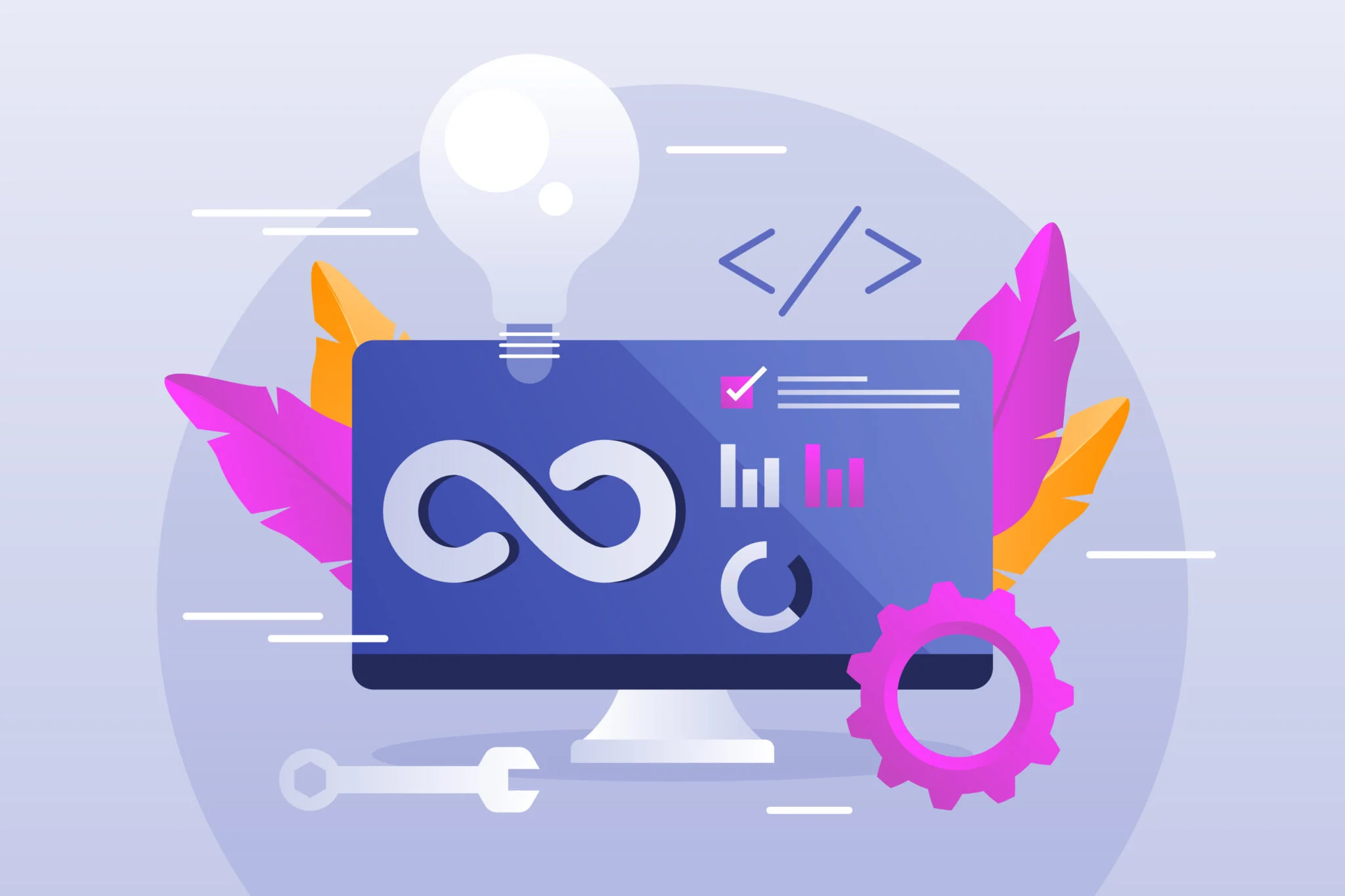How to Implement Multi-Tenancy in Laravel with Tenancy for Laravel
Implementing multi-tenancy in Laravel through the Tenancy package unveils a realm of opportunities to craft adaptable and expandable applications. By diligently following the sequential implementation guide and upholding optimal practices, you guarantee the efficiency, security, and customization of your multi-tenant application to suit the distinct requirements of every tenant. Embrace the potent capabilities of multi-tenancy to elevate your Laravel endeavors to unprecedented levels of accomplishment. This package can alert a Laravel app tenant. The guiding principle behind this package is that it should just contain the bare minimum requirements to support multi-tenancy.
The package possesses the capability to ascertain the current tenant for a given request. Furthermore, it affords you the flexibility to stipulate the actions to undertake when designating a tenant as the current one. This methodology harmoniously aligns with multi-tenancy projects that necessitate the utilization of either a single database or multiple databases.

Understanding Multi-Tenancy
What does Multi-Tenancy mean?
Multi-tenancy constitutes an architectural strategy where a solitary software application caters to numerous clients, termed “tenants,” while meticulously segregating their respective data and configurations. Essentially, it simulates the presence of Distinct Application instances for each tenant, all harmoniously residing within a unified codebase. Before delving into practical implementation, it’s pivotal to comprehensively grasp the fundamental concept of multi-tenancy. In essence, multi-tenancy embodies a software architecture that empowers a lone application instance to proficiently serve an array of tenants.
A tenant can be visualized as an individual client, organization, or specific user cohort that actively engages within the application’s framework. Each tenant’s data is kept separate and isolated from others, providing a secure and personalized environment for each entity. This architecture not only optimizes resource utilization but also ensures data privacy and scalability.
The Importance of Multi-Tenancy
Multi-tenancy offers a plethora of advantages, particularly within the domains of web development and Software as a Service (SaaS). This approach empowers businesses to adeptly oversee multiple clients without necessitating redundant endeavors, thereby curtailing infrastructure expenditures. Moreover, it provides a more seamless encounter for both developers and end-users, ultimately enhancing operational efficiency and user satisfaction. Additionally, it enables easier scalability, as new tenants can be onboarded without significant overhead.
When the subject shifts to incorporating multi-tenancy into Laravel, the Tenancy for Laravel package emerges as a holistic and user-centric resolution. Crafted by a group of devoted Laravel enthusiasts, this package streamlines the complete procedure for establishing multi-tenancy. It furnishes an array of tools and functionalities that seamlessly merge with the fundamental capabilities of Laravel. This renders it an exemplary selection for both experienced developers and those embarking on their first venture into the realm of multi-tenancy.
Implementing Multi-Tenancy with Tenancy for Laravel
Step 1: Setting Up Your Laravel Project
It is imperative to confirm the presence of a fully operational Laravel project before delving into the complexity of multi-tenancy deployment. In case one isn’t in place, you can swiftly establish it using Composer. Once your project is prepared, you are merely a few steps away from unlocking the immense potential that multi-tenancy holds.
Step 2: Installing Tenancy for Laravel
After having your Laravel project prepared, the next step involves integrating the Tenancy for Laravel package. Access your terminal and execute the subsequent command:
composer require tenancy/tenancy
Upon execution, this command will procure and install the package along with its requisite dependencies. Notably, Tenancy for Laravel is meticulously crafted to seamlessly harmonize with Laravel’s underlying framework, thereby ensuring a seamless and uncomplicated integration process.
Step 3: Configuring Tenancy
Configuration constitutes a pivotal facet in establishing multi-tenancy. Commence by initiating the creation of a new configuration file named “tenancy.php” within the “config” directory of your Laravel project. This file will serve as the dedicated repository housing all your multi-tenancy configurations and settings. Within this configuration file, an array of tenancy-related facets can be defined. These encompass diverse elements such as database partitioning, strategies for tenant identification, and beyond. Notably, the Tenancy for Laravel package presents an array of configuration choices, affording you the flexibility to customize the multi-tenancy framework to align seamlessly with your project’s distinct necessities.
Step 4: Creating Tenant-Aware Models
To interact with tenant-specific data, you’ll need to create tenant-aware models. These models will extend Tenancy for Laravel’s base model classes. By doing so, you ensure that every interaction with the database is scoped to the current tenant, maintaining data isolation.
Step 5: Handling Tenant Routes and Views
One of the key aspects of multi-tenancy is managing tenant-specific routes and views. With Tenancy for Laravel, you can achieve this seamlessly. Define your tenant routes and views within the appropriate directories, and the package will automatically handle the routing and view rendering based on the active tenant.
Step 6: Testing and Deployment
Before deploying your multi-tenant application to production, thoroughly test it in a controlled environment. Create test tenants and simulate real-world scenarios to ensure that data isolation and tenancy-specific functionalities are working as expected. Once you’ve instilled a sense of assurance in the stability of your application, proceed to deploy it onto your production server. Vigilantly monitor various aspects, including performance benchmarks, scalability metrics, and any potential glitches that might surface with the expansion of your tenant base.
Best Practises for Effective Multi-Tenancy
While the Tenancy for Laravel package streamlines the multi-tenancy implementation process, adhering to best practices is crucial for optimal results.
Thorough Testing
Rigorous testing is essential to identify and rectify issues early in the development cycle. Create test cases that cover various tenant scenarios to ensure the stability and reliability of your application.
Ensuring Robust Multi-Tenancy
As you embark on the path of integrating multi-tenancy into your Laravel application, embracing comprehensive testing emerges as a fundamental pillar of triumph. Testing assumes a pivotal role in unearthing, rectifying, and preempting potential challenges that could surface within a multi-tenant milieu. This facet holds paramount importance within the development journey, guaranteeing not only the seamless functionality of your application but also upholding the sanctity and security of tenant data.
Identifying Tenant-Specific Challenges
Multi-tenancy introduces a layer of complexity due to the need to manage multiple tenants, each with its distinct data and requirements. Thorough testing helps in pinpointing tenant-specific challenges that might otherwise go unnoticed. By crafting comprehensive test scenarios that encompass various tenant scenarios, you can gain insights into how your application behaves in different contexts. This proactive approach enables you to address potential problems before they manifest in a production environment.
Validation of Tenant Isolation
A fundamental aspect of multi-tenancy is ensuring strict isolation of tenant data. Rigorous testing aids in validating the effectiveness of the data isolation mechanisms provided by the Tenancy Package. By simulating interactions between different tenants, you can ascertain whether tenant data remains properly segregated and confidential. This verification step is crucial to maintaining the trust of your clients and adhering to data privacy regulations.
Stability and Reliability
In a multi-tenant environment, instability in one tenant’s segment of the application could potentially affect others. Thorough testing helps in uncovering scenarios where interactions between tenants might lead to unexpected behaviors or performance degradation. By subjecting your application to diverse usage scenarios through testing, you can identify bottlenecks, resource contention, and other issues that could compromise the stability and reliability of your system.
Regression Testing
As your application evolves, new features and enhancements might inadvertently introduce regressions, affecting the functionality of existing components. Thorough testing includes comprehensive regression testing, where previously implemented features are rigorously examined to ensure that they continue to function as expected. This cyclic testing methodology acts as a shield against inadvertent repercussions, preserving the integrity of your multi-tenant application.
Unit, Integration, and End-to-End Testing
A robust testing strategy encompasses various levels of testing, each serving a specific purpose. Unit testing focuses on individual components, ensuring that they perform as intended in isolation. Integration testing evaluates the interaction between different components, while end-to-end testing validates the complete flow of actions within the application. Employing a combination of these testing levels helps create a comprehensive safety net that catches issues at different stages of development.
Automated Testing
To streamline the testing process and ensure consistency, consider implementing automated testing procedures. Automated tests can be executed regularly, allowing you to catch regressions early and ensure the ongoing stability of your multi-tenant application. The Tenancy package integrates seamlessly with Laravel’s testing tools, enabling you to write test cases specific to tenant behavior.
Security Measures
Implement robust security measures to safeguard tenant data. Utilize encryption, role-based access control, and data anonymization techniques to fortify the application’s security posture.
Safeguarding Multi-Tenant Environments
As you embark on the journey of implementing multi-tenancy within your Laravel application using the Tenancy package, one of the paramount considerations is ensuring robust security measures. Multi-tenancy introduces complexities in terms of data isolation and access control, making security an indispensable pillar of your development process. Let’s explore the key security measures that you should employ to create a secure and trustworthy multi-tenant environment.
Data Isolation and Privacy
A cornerstone of multi-tenancy is maintaining strict data isolation between tenants. Each tenant’s data must remain segregated, ensuring that sensitive information is not exposed to unintended parties. Leveraging the features provided by the Tenancy package, you can enforce database separation, ensuring that each tenant’s data resides in a distinct database schema or table. By implementing data isolation mechanisms, you can safeguard against data leakage and breaches of tenant privacy.
Role-Based Access Control (RBAC)
Implementing a sturdy Role-Based Access Control (RBAC) system holds crucial importance within a multi-tenant environment. RBAC enables you to define granular permissions and roles for different user groups within each tenant. With the Tenancy package, you can extend Laravel’s native RBAC capabilities to apply them on a per-tenant basis. This ensures that each tenant can define its own set of roles and permissions, further enhancing data security and access control.
Data Encryption
To enhance the security of sensitive data, contemplate integrating data encryption techniques. Encryption guarantees that even if unauthorized access transpires, the data remains indecipherable unless furnished with the requisite decryption keys. Leverage Laravel’s encryption capabilities alongside the Tenancy package to encrypt data both at rest and during transmission. This dual approach fortifies an additional layer of safeguarding for your tenant’s data.
Authentication and Single Sign-On (SSO)
An impervious authentication mechanism holds paramount importance within a multi-tenant environment. Implementing strong authentication measures ensures that only authorized users can access tenant-specific resources. Deliberate the integration of Single Sign-On (SSO) solutions to streamline the authentication procedure for users across various tenants. This endeavor not only augments the user experience but also consolidates authentication controls, simplifying the management of security policies.
Data Anonymization and Masking
In scenarios where data needs to be shared with third parties, consider implementing data anonymization and masking techniques. These methods ensure that sensitive information is not exposed, even when sharing data for analytical or reporting purposes. With the Tenancy package, you can implement custom data masking strategies on a per-tenant basis, allowing you to strike a balance between data usability and security.
Regular Security Audits
Security is a continuous process that needs constant review and improvement. Conduct regular security audits to identify vulnerabilities and gaps in your multi-tenant application’s security posture. By proactively addressing security concerns, you can stay ahead of potential threats and ensure that your application remains resilient against evolving attack vectors.
Secure Coding Practices
To avoid common vulnerabilities like SQL injection, cross-site scripting (XSS), and others, it is crucial to follow secure coding practices. Educate your development team about secure coding guidelines and encourage the use of frameworks and libraries that promote secure coding patterns. The Tenancy package integrates seamlessly with Laravel’s security features, allowing you to build a solid foundation for secure multi-tenancy.
Scalability Considerations
As your application grows, scalability becomes a priority. Optimize database indexing, caching, and resource allocation to ensure consistent performance across all tenants.
Ensuring Seamless Growth in Multi-Tenant Applications
As you embark on the journey of implementing multi-tenancy within your Laravel application using the Tenancy package, it’s imperative to place a strong emphasis on scalability considerations. Scalability ensures that your application can seamlessly accommodate increasing loads and growing numbers of tenants, maintaining optimal performance and user experience. Let’s explore the key scalability considerations that should guide your multi-tenant implementation.
Optimizing Database Design
A foundational aspect of multi-tenant scalability is an optimized database design. With the Tenancy package, you can implement strategies to partition data effectively between tenants, such as using separate database schemas or tables. As your application grows, ensure that your database design supports efficient data retrieval and storage, minimizing bottlenecks and contention.
Horizontal Scaling
Horizontal scaling involves distributing the workload across multiple servers or instances to handle increased traffic and demand. Utilize load balancers to evenly distribute requests among different server nodes. The Tenancy package aligns well with horizontal scaling principles, allowing you to scale out your application’s tenant-specific components without sacrificing performance.
Caching Strategies
Implementing effective caching strategies is paramount to enhancing application performance and reducing database load. Leverage Laravel’s built-in caching mechanisms in tandem with the Tenancy package to cache tenant-specific data. This not only reduces response times but also minimizes the strain on your database, contributing to better overall scalability.
Resource Allocation and Monitoring
As the number of tenants increases, monitoring resource utilization becomes crucial. Utilize monitoring tools to track metrics such as CPU usage, memory consumption, and database performance. This insight enables you to identify potential resource bottlenecks and allocate resources judiciously, ensuring a smooth experience for all tenants.
Auto-scaling and Elasticity
Modern cloud platforms offer auto-scaling capabilities that allow your application to automatically adjust resources based on traffic spikes. Embrace these cloud-native features to ensure elasticity and cost efficiency. The tenant package integrates seamlessly with cloud platforms, enabling you to take full advantage of auto-scaling capabilities.
Database Indexing and Query Optimization
Efficient database indexing and query optimization are essential for maintaining performance as data volumes increase. Regularly review and optimize your database indexes to ensure that queries remain responsive even as the dataset grows. The Tenancy package’s support for tenant-specific migrations allows you to fine-tune indexes for each tenant’s needs.
Content Delivery Networks (CDNs)
Utilize CDNs to distribute static assets efficiently to users across different geographical regions. CDNs not only enhance content delivery speed but also reduce the load on your application’s servers. Integrating CDNs with the Tenancy package ensures that tenant-specific assets are served optimally to users.
Testing Scalability
Scalability testing is indispensable for validating your application’s performance under varying levels of load. Utilize tools that simulate realistic traffic patterns and gradually increase the load to observe how your application responds. Incorporate scalability testing into your development and deployment pipelines to catch performance bottlenecks early.
Conclusion
In the ever-evolving landscape of web development, creating efficient and scalable applications has become more crucial than ever. One such technique that has gained significant traction is multi-tenancy, allowing a single application instance to serve multiple clients or tenants while keeping their data isolated. For those immersed in the Laravel PHP framework, the Tenancy for Laravel package emerges as a commendable solution for seamlessly integrating multi-tenancy. Within this comprehensive guide, we will embark on a thorough exploration of the nuanced intricacies associated with integrating multi-tenancy into Laravel through the Tenancy package. This journey empowers you to fashion sturdy and effective applications that adeptly cater to the diverse requisites of your clientele.


